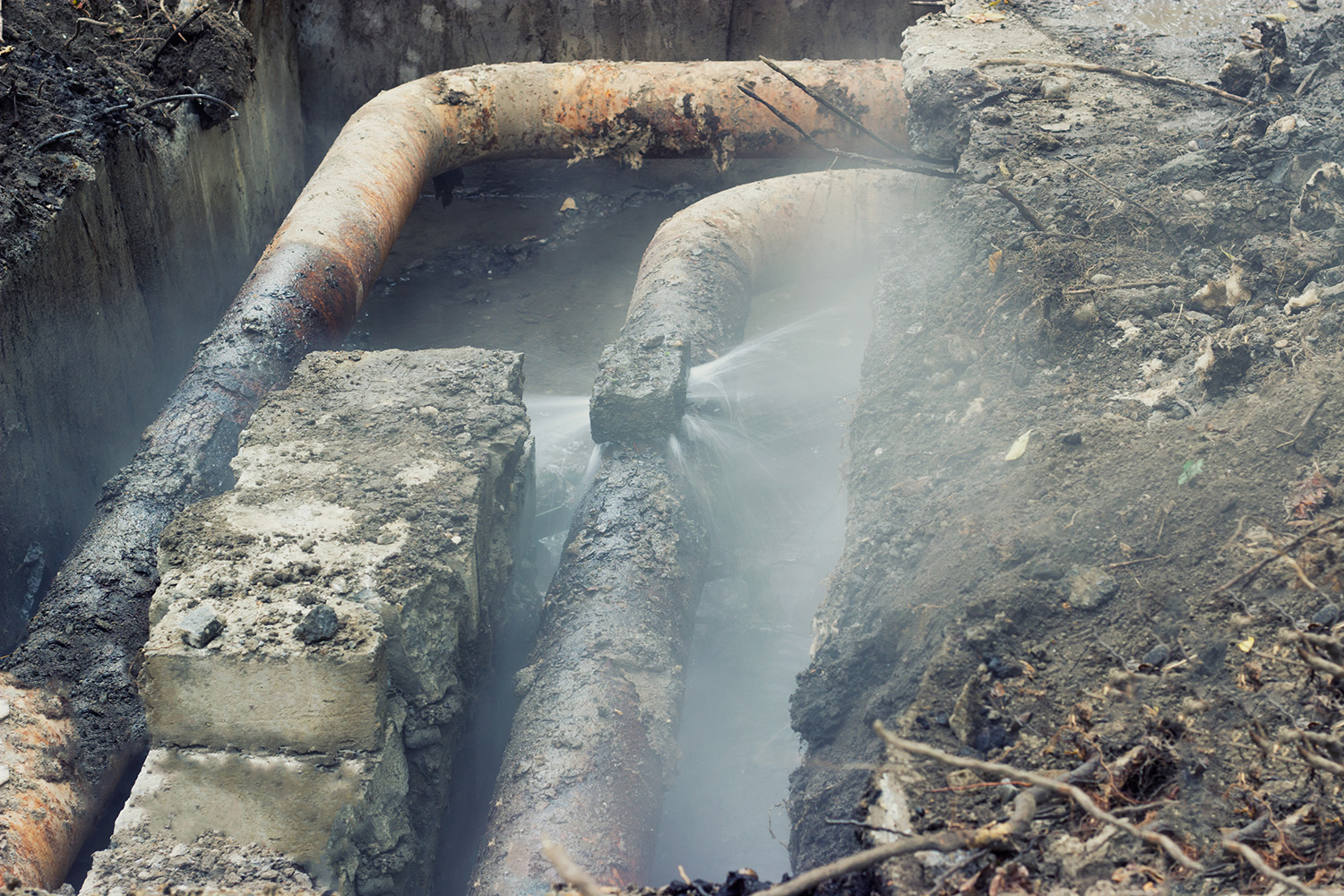Stanford researchers propose a new way to locate water leaks within the tangle of aging pipes found beneath many cities. The improvement could save time, money and billions of gallons of water.
By Danielle Torrent Tucker
You can delay irrigating the lawn or washing the car all you want, but to really make a big dent in water savings we need to stop water waste long before the precious resource ever reaches our taps.

A new way to detect leaks in aging pipes underground could save save money and billions of gallons of water. (Image credit: HiddenCatch / iStock)
An estimated 20 to 50 percent of water is lost to leaks in North America's supply system - a major issue as utilities contend with how to sustain a growing population in an era of water scarcity.
"People talk about reducing the time you take showers, but if you think about 50 percent of water flowing through the system being lost, it's another magnitude," said study author Daniel Tartakovsky, a professor of energy resources engineering in Stanford's School of Earth, Energy & Environmental Sciences (Stanford Earth).
In a move that could potentially save money and billions of gallons of water, Tartakovsky, along with Abdulrahman Alawadhi from the University of California, San Diego, have proposed a new way to swiftly and accurately interpret data from pressure sensors commonly used to detect leaks.
In addition to water utilities, Tartakovsky said the method could also be applied to other industries that use pressure sensors for leak detection, such as in oil and natural gas transmission networks that run under the sea and pose additional environmental hazards.
The research was published online Feb. 12 in the journal Water Resources Research.
Water hammer
The new method targets water leaks in transmission mains, which are typically routed out of sight underground. Water transmission networks in North America and much of Europe are fitted with sensors that measure pressure to gauge flow.
The researchers built upon a technique known as the water hammer test - the industry standard for predicting the location of leaks. The test involves suddenly shutting off flow through a pipe and using sensors to gather data about how the resulting shock wave, or "water hammer," propagates. Tartakovsky and Alawadhi propose a new way to assimilate this data into a mathematical model to narrow down the location of a leak.
The current method for detecting leaks is computationally expensive; to reduce the cost, analysts need to make a lot of simplifying assumptions, according to Tartakovsky.
"We proposed a method that is fast enough that you don't need to make these assumptions, and so it's more accurate - you could do it in real time on a laptop," Tartakovsky said. "It's something utilities can use with existing computational resources and the models they already have."
By improving speed and accuracy, the researchers' method saves money, both in terms of time and labor and the cost of wasted water. For example, if you wanted to find a leak in a football field-length pipe, you could dig up the whole field until you hit wet soil, or you could use the new method to constrain the location of the leak to a 10-meter section of the pipe.
"In cities, it's harder because pipes are under buildings and you have to break asphalt and things like that, so the more accurate your prediction of the location, the better," Tartakovsky said.
Cities have the most potential for major water leaks - and the older the urban areas, the bigger the problems, with their complex networks of aging pipes.
"For operators who routinely use water hammer tests, the cost of this is zero - this is just a better way of interpreting these tests," Tartakovsky said. "We are not selling it or patenting it, so people could just use it and see whether they get better predictions."
Tartakovsky is also a member of Bio-X.
The research was supported by the National Science Foundation and the Air Force Office of Scientific Research.






